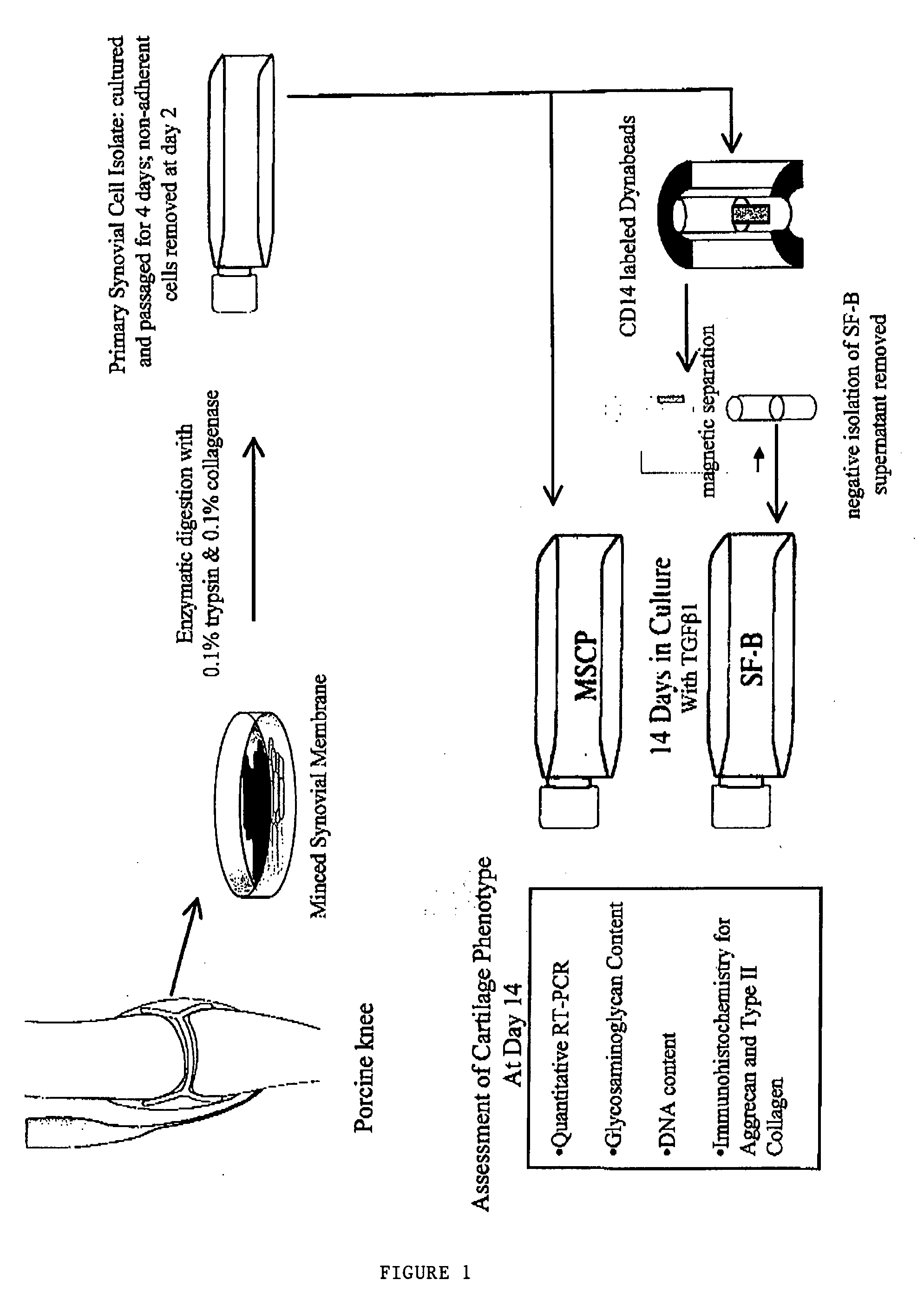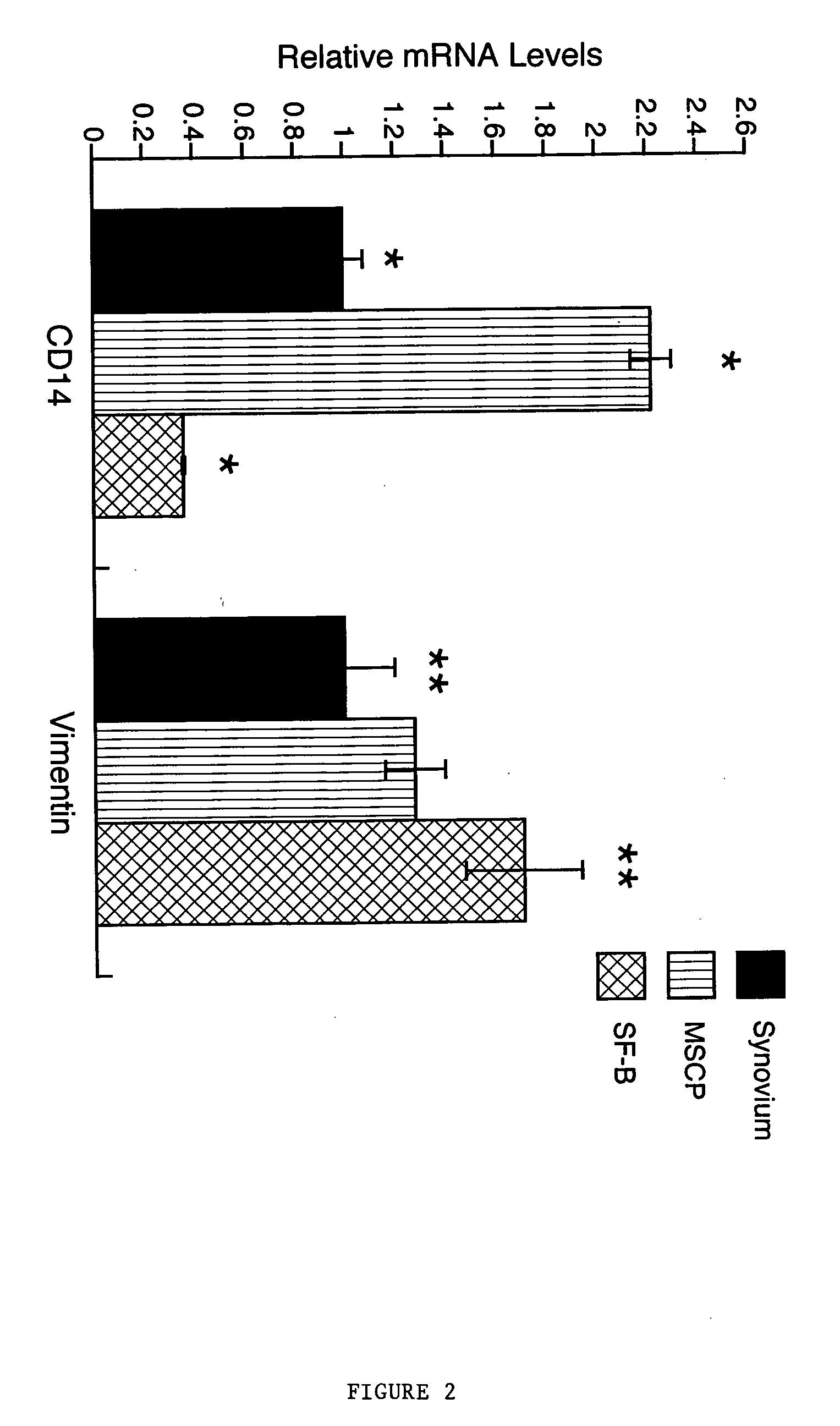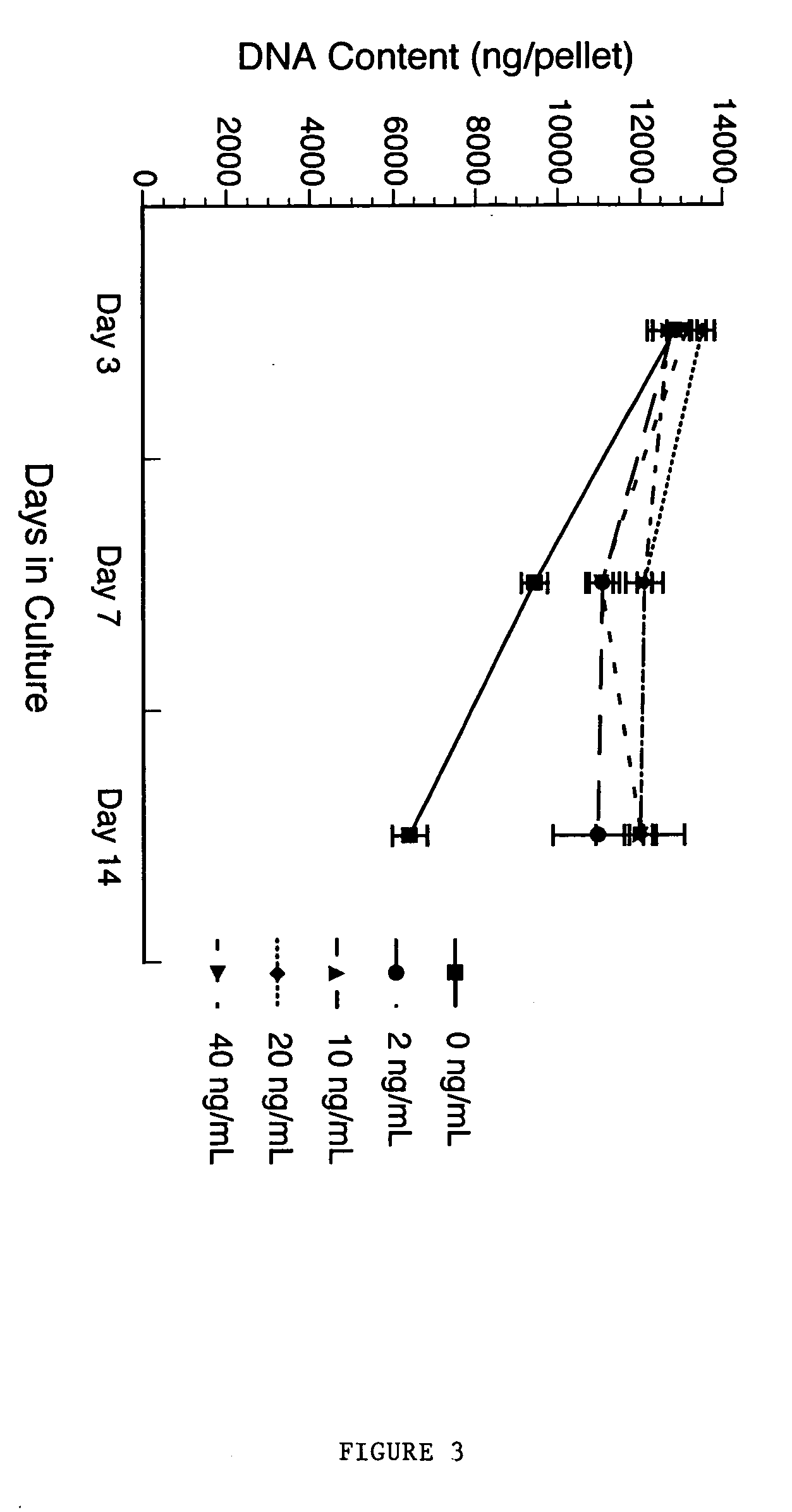Methods and compositions for repairing cartilage
a cartilage and composition technology, applied in the field of orthopedic injury and repair, can solve the problems of not addressing the cause of the problem, reducing the range of motion of individuals with cartilage damage, and reducing joint pain and/or swelling in the affected area, so as to reduce the severity of chronic joint disease, reduce pain, and restore joint mobility
- Summary
- Abstract
- Description
- Claims
- Application Information
AI Technical Summary
Benefits of technology
Problems solved by technology
Method used
Image
Examples
Embodiment Construction
[0026] Currently available cartilage repair techniques have limitations, including limited healing, high cost, breakdown of the tissue implant leading to loss of function, and limited availability of competent cellular components. Techniques dependent on ingrowth from the surrounding articular cartilage as a supplier of functionally active cells have to date proven unsuccessful. A competent cell source is a critical element of a successful tissue-engineered cartilage construct. In seeking a solution to this problem, several laboratories have investigated such multipotential cells as periosteal, perichondrial, bone marrow, adipocyte and synovial cells, all of which possess osteogenic and chondrogenic potential. This capacity to replicate and differentiate makes these cells candidates for use in cartilage repair.
[0027] Synovial cells display significant chondrogenic potential in vivo. Synovium has a propensity for forming cartilage, as seen in the pathologic condition synovial chondr...
PUM
| Property | Measurement | Unit |
|---|---|---|
| concentrations | aaaaa | aaaaa |
| volume | aaaaa | aaaaa |
| volume | aaaaa | aaaaa |
Abstract
Description
Claims
Application Information
 Login to View More
Login to View More - R&D
- Intellectual Property
- Life Sciences
- Materials
- Tech Scout
- Unparalleled Data Quality
- Higher Quality Content
- 60% Fewer Hallucinations
Browse by: Latest US Patents, China's latest patents, Technical Efficacy Thesaurus, Application Domain, Technology Topic, Popular Technical Reports.
© 2025 PatSnap. All rights reserved.Legal|Privacy policy|Modern Slavery Act Transparency Statement|Sitemap|About US| Contact US: help@patsnap.com



